- Home
- Robert E. Howard
Bran Mak Morn: The Last King Page 30
Bran Mak Morn: The Last King Read online
Page 30
Though he �elt a sinking of the heart when he contemplated rewriting [The Lost Race],�Howard did make the changes sought by Wright, and the tale became his second sold to, and fourth published in, the magazine, appearing in the January 1927 issue.
The Lost Race, like Spear and Fang, is a relatively straightforward adventure story with little of the truly �eird�in it. A Briton named Cororuc is travelling from Cornwall to his home somewhere to the east, when he is captured by a band of very small, dark-complexioned men, armed with stone tools and dressed in furs. They take him to an immense cavern where he is brought before their apparent leader, an incredibly ancient man, from whom he learns that these people are Picts. He is incredulous: �icts!... I have fought Picts in Caledonia...; they are short but massive and misshapen; not at all like you!��hey are not true Picts,�the ancient tells him, and relates to him the story of �he lost race,�which we have already quoted above.
Cororuc is bewildered by the ancient� evident hatred of him, and of all the Celts: �hat these people were even human, he was not at all certain. He had heard so much of them as �ittle people.�Tales of their doings, their hatred of the race of man, and their maliciousness flocked back to him. Little he knew that he was gazing on one of the mysteries of the ages. That the tales which the ancient Gaels told of the Picts, already warped, would become even more warped from age to age, to result in tales of elves, dwarfs, trolls and fairies... just as the Neanderthal monsters resulted in tales of goblins and ogres.� There is little in this story of the Picts that we do not find in Scott Elliot� book (save, of course, Howard� passionate intensity). As for the stories Cororuc had heard, already becoming �arped,�we find in Scott Elliot: � great many stories of giants are probably dim and jumbled-up traditions of the tall, red-haired cave-men seen by the first Picts who invaded Britain.... But at a much later period the conquering Pict is himself overcome by the Gaelic Celt. Then it is his turn to become a malignant gnome, a dark little dwarf, whose stone arrows are much to be dreaded.... It is by no means improbable that the �ittle people��that is, the small, dark Picts �did live on for many years in those underground houses of theirs....�This idea was not original with Scott Elliot, of course. Numerous writers of the time expressed the idea that fairy tales and myths must have some basis in historical fact.
The Lost Race was accepted by Weird Tales in January 1925 (it was not published until two years later). It is just over a year later that we find evidence of the next story of the Picts, when Weird Tales editor Wright rejects Men of the Shadows, saying: � thoroughly enjoyed MEN OF THE SHADOWS, but I fear I can not use it in WEIRD TALES. It is too little of a �tory,�despite the vigorous action in the opening pages. It is rather a chronicle of a tribe, a picture of the evolution of a race; and thereby it lacks the suspense and thrill that a story of individual conflict and hopes and fears and drama would have.� This is, so far as we now know, the first completed story featuring Bran Mak Morn and, while Wright� comment that �t is too little of a �tory� seems just, it is a seminal work for our understanding of Robert E. Howard� conceptions of the Picts, with it� lengthy �istory�of the race, as told by an aged wizard. It is here that we find new elements grafted onto the story of the �editerranean�race.
�en of the Shadows�is narrated by a yellow-haired Norseman who has served with the Roman legions manning Hadrian� wall. We have already noted that The Romance of Early British Life also told the story of a Roman legionary serving in Caledonia, and that the incident by the lake, in which our narrator� final two companions are speared by a Pict who has submerged himself, very clearly echoes a similar incident in Scott Elliot� book.
The narrator is captured by the Picts, but they are stayed from killing him by the command of their leader, before whom he is brought after he has recovered. When this chief refers to the Picts as �y people,�the Norseman remonstrates, �ut you are no Pict!�� am a Mediterranean,�the chief replies.
�ho are you?� �ran Mak Morn.� �hat!�I had expected a monstrosity, a hideous, deformed giant, a ferocious dwarf built in keeping with the rest of his race.
�ou are not as these.� � am as the race was,�he replied. �he line of chiefs has kept its blood pure through the ages, scouring the world for women of the Old Race.�
Bran, then, is a �ure�Pict, while the rest of the race has degenerated. (The ancient in The Lost Race had said the Picts of Caledonia were �ot true Picts.� We will recall that, in both Scott Elliot and The Lost Race, it was suggested that the Picts, pushed by the Celts into the wild hills of the west and north to which they had themselves pushed the earlier, red-haired cavemen, had interbred with their savage predecessors �nd became a race of monstrous dwarfs.�Because the line of chiefs �as kept its blood pure,�though, Bran represents the race as it once was. We can only wonder what his relationship to the Silurian Picts might be, for Howard does not make it explicit.
The Norseman is then witness to a confrontation between Bran and an aged wizard, what appears to be a contest of wills, a �ombat between the eyes and the souls behind them.�When Bran has triumphed, the ancient relates to his listeners the history of his race, and we find some remarkable new elements now grafted onto the story of the Picts. We learn that they were a �ameless Tribe�in the beginning, and had their origin somewhere in the northwest of the continent we now know as North America. They were the �irst Race�of men, though �east men�(Neanderthals) preceded them. The �econd Race�were Lemurians, the �hird Race�Atlanteans (also identified as Cr�-Magnons), and the �ourth Race�Celts. The beast-men (who may be identical with the �eindeer men,�red-haired savages) first fled southward before the Nameless Tribe, then crossed over to Africa via a chain of marshy islands, then northward into Europe. The Picts (or Nameless Tribe) first drifted from their original home to islands southeast of there, then fled eastward when a cataclysm destroyed their islands (now mountain peaks), then migrated into South America during the Ice Age, and then moved on to Atlantis (driving the Atlantean Cr�-Magnons into Europe, where they displaced the Neanderthal beast-men). Following an internecine conflict, a portion of the Nameless Tribe migrated to Africa, and from this point their story follows the historical one.
These new elements appear to be derived from several sources. The �irst Race�and successors come from Theosophy, a quasi-religious movement founded by Madame Helena Blavatsky in the 19th century. Her work was a hopeless gallimaufry of quasi-Oriental religion and philosophy combined with imperfectly understood science (or, more frequently, her rantings against science) and anthropology, not to mention flights of pure unbridled fancy, but she attracted a huge following. It is possible that Howard learned of Madame Blavatsky� theories of the �oot races�and �ub-races�of mankind through friends acquainted with occult literature, or through secondary sources. It would not appear that he had read Blavatsky� own work, for he does not follow her identifications of the races in most particulars (certainly not her ludicrous physical descriptions), nor does he seem to allude in a direct way to any of her ideas.
Another source for these ideas appears to have been the work of the British folklorist Lewis Spence, particularly his The Problem of Atlantis (1924) and Atlantis in America (1925). In these works Spence brings together a great mass of geological, botanical, anthropological, and other evidence, together with accounts from Classical sources, in an attempt to prove the former existence of an Atlantean continent in the Atlantic Ocean. Spence, having written a number of scholarly treatises on the folklore of many cultures, was able to make it all sound convincing enough, at least to readers with no particular scientific knowledge, or those who wanted to be convinced (as, apparently, he did himself). His books have a much greater aura of plausibility than those of the occultists.
Spence� argument, in brief, hinged upon the �udden�appearance of the Cr�-Magnons in southwestern Europe, and the assumption that, since no evidence of an earlier, transitional stag
e was known, they must have acquired their culture somewhere other than Europe or Africa. He attempts to tie together a great mass of anthropological data to show a common culture-complex spreading through Africa, Europe, and the Americas at roughly the same time, suggesting that this culture must have originated at some mid-point between those lands, a place no longer accessible to archaeologists �Atlantis. This identification of Atlantis as the source of Cr�-Magnon man and his culture seems to have been original with Spence, and as we have seen, Howard identifies the Atlanteans as Cr�-Magnons. Atlantis in America goes into greater detail on the American evidences for his thesis, and includes a chapter, �he Analogy of Lemuria,�which presents a brief outline of evidences adduced by other writers for the previous existence of a Pacific continent. Howard must have encountered these ideas between the writing of The Lost Race (accepted in January 1925) and Men of the Shadows (rejected March 1926).
Late in July 1925, Howard began a story called The Isle of the Eons. He appears to have written the first 26 pages of the story, which are fairly straightforward action, in that month, then set the tale aside for a time. He then resumed writing the story at about the same time he wrote Men of the Shadows, i.e., early 1926. He took up the tale where he had left it, and wrote an additional 17 pages, bringing the total to 43 pages, leaving the story, once again, unfinished. He would return to this draft once more, in 1927 or 1928, and then write two other drafts in 1929.
The 1926 portion of the first draft ends as the unnamed �utchman�of the story deciphers some hieroglyphics, concluding that the isle on which he and his companion have been stranded is a remnant of Lemuria: �emuria iss to der Pacific, vot Atlantis iss to der Atlantic.... Von Kaelmann alvays said ... dot dey had a great civilization vhen der der men on Atlantis ver still apes, who ver der ancestors uf der Cro-Magnon peoples�(from unpublished draft, p. 43).
It seems possible, perhaps even likely, that Howard stopped working on The Isle of the Eons to write Men of the Shadows, a story in which he would refine and develop these new ideas.
We may also note that the 1926 section of The Isle of the Eons provided new information about the buildings and ruins found on the island, including a number of allusions and comparisons to Central and South American monuments or cities. While Spence posited that the pre-Columbian cultures of South and Central America owed much to Lemuria, Howard� source for the new material in The Isle of the Eons seems to have been not Spence, but E.A. Allen� The Prehistoric World: or, Vanished Races, published in 1885, a copy of which was in Howard� library.
In this book Howard not only found names and descriptions he could use in The Isle of the Eons, but also found several chapters that no doubt commanded his attention, in view of his interest in the Picts. Chapter 6, for example, is devoted to �he Neolithic Age in Europe,�and particularly to the �uranians.�The word �ict�does not appear in the book, but we can read that �istory, tradition, linguistics, and ethnology conspire to fortify the conclusions that, in prehistoric times, all Europe was overspread by the Mongoloid (Turanian) race, of which remnants have survived to our own times in the persons of the Basques, Finns, Esths, Lapps, and some smaller tribes.�As to their physical description, it conforms to that of the writers we have already mentioned: � race of people, small in stature, dark visaged, and oval-faced �fond of war and the chase, yet having a rude system of agriculture.� Allen� book, of course, makes no mention of a possible Atlantean or Lemurian connection for the Picts, and his Turanians are not described as the �irst Race,�coming from America. Howard, though, did not hesitate to use some of Allen� conclusions to his own ends. For instance, Allen devotes his tenth chapter to the mysterious �ound Builders�of America, and offers the following commentary concerning a mysterious effigy-mound:
�n this case, however, nearly all observers conclude that it was a religious work. Mr. MacLean, after describing these three figures, propounds this query: �oes the frog represent the creative, the egg the passive, and the serpent the destructive power of nature?�Not a few writers, though not acquainted with the presence of the frog-shaped figure, have been struck with the combination of the egg and the serpent, that plays such an important part in the mythology of the Old World. We are told that the serpent, separate or in combination with the circle, egg, or globe, has been a predominant symbol among many primitive nations.�
Howard draws upon this in Men of the Shadows, thus reinforcing his mythical connection between America, Atlantis and the Picts:
�he ancient took a flaming brand from the fire and with a motion incredibly swift, inscribed the circle and triangle in the air. And strangely, the mystic symbol seemed to hover in the air, for a moment, a ring of fire.
�The circle without beginning,�droned the wizard. �he circle unending. The Snake with its tail in its mouth, that encompasses the Universe. And the Mystic Three. Beginning, passivity, ending. Creation, preservation, destruction. Destruction, preservation, creation. The Frog, the Egg, and the Serpent. The Serpent, the Egg, and the Frog.�
In depicting the contest of wills between Bran and the wizard, Howard seems to suggest more than a personal struggle for power between two men. Rather, the two are the focal points through which unseen powers seek to loose themselves upon the world. �he wizard was the Stone Age typified; the chief, the coming civilization. The destiny of the Pictish race, perhaps, hinged on that struggle.�The wizard warns Bran that if he wins �he Serpent coils again� the serpent, as usual with Howard, is associated with the enemy, with destruction. Bran, on the contrary, is associated with the �oming civilization.� It is interesting to note that in Men of the Shadows, and in the earlier playlet, Bran Mak Morn, Bran is referred as a chief. It is not until later in 1926, and the stories of Kull, that the theme of kingship, which we can see as, precisely, a step toward �oming civilization,�is first dealt with. It will be almost exactly four years before we see Bran Mak Morn again, this time as a king. It is in the Kull stories that we next find the Picts.
The Picts of the Kull series are barbarian allies of the ancient kingdom of Valusia. In the first published Kull story, The Shadow Kingdom, which Howard worked at sporadically between the summer of 1926 and September 1927, we learn that Kull, as an Atlantean, is a �ereditary enemy of all Picts,�though as king of Valusia he is their most important ally. He and a Pictish warrior, Brule, though their first meeting was marked by �utual tribal enmity seething beneath their cloak of formality,�come to be fast friends in this series, and on more than one occasion it is Brule who saves Kull� life. The Kull stories are set in the far recesses of an imaginative past, long before the great cataclysms that supposedly destroyed Atlantis and Lemuria, so the �istorical�Picts of the early tales were now adopted by Howard as a means of connection, not just with �ncient times,�but with the world of fantastic adventures through which Kull, and later Conan, would move. Howard completed 10 stories of Kull (including two in which he is merely an offstage character), a poem, and began three stories which he left unfinished, most written between 1927 and early 1929. Of these, only three stories (the first, Exile of Atlantis, and the two in which Kull is offstage) and the poem do not include Brule the Spear-Slayer and the Picts.
Some time in 1928, Howard wrote a story entitled The Little People in which the Picts are featured, with inspiration from yet another writer added into the mix. In this story, set in the modern day, a brother and sister, Americans named Costigan, are in England during a European tour. When his young sister expresses disgust for the �oolishness�of Arthur Machen� The Shining Pyramid, which he considers a �asterpiece of outr� litrature,�Costigan lectures her, telling the story of the Picts essentially as outlined in The Romance of Early British Life. But the reference to Machen� The Shining Pyramid suggests that Howard has now taken the Welsh writer� conception of The Little People and added it to his conception of the Picts.
In The Shining Pyramid, two Englishmen investigate the puzzling disappearance of a young
woman from a local village, and ultimately are horrified witnesses when she is burned to death in a sacrificial ceremony by a host of loathsome underground dwellers, �hings made in the form of men but stunted like children hideously deformed, the faces with the almond eyes burning with evil and unspeakable lusts.�Their flesh is described as a �hastly yellow,�and they speak to one another in �ones of horrible sibilance.�In explaining to his friend Vaughan the chain of deductions that led them to that horrible scene, Dyson explains: � remembered what people had said about Annie Trevor� disappearance, that she had been �aken by the fairies�... And the hint came of the old name of fairies, �he little people,�and the very probable belief that they represent a tradition of the prehistoric Turanian inhabitants of the country, who were cave dwellers: and then I realised with a shock that I was looking for a being under four feet in height, accustomed to live in darkness, possessing stone instruments, and familiar with the Mongolian cast of features!� Howard� linkage of the Picts with the Little People suggests that the once-proud Pictish race eventually devolved into misshapen underground monsters. This conception would undergo another change very soon.
In the spring of 1930, Howard returned for the first time in four years to Bran Mak Morn, selling two stories to Weird Tales editor Farnsworth Wright, Kings of the Night and The Dark Man. In the former, Bran has brought together forces of Gaels and Norsemen to join his Picts in what he hopes will be a decisive battle against the Romans. But the Norse leader has died, and his men refuse to follow either Bran or Cormac the Gael, insisting upon � king, neither Pict, Gael nor Briton�to lead them. Through the sorcery of the aged wizard Gonar, King Kull of Valusia appears upon the scene, and takes on the leadership of the Norsemen. In The Dark Man, Howard� Irish outlaw, Turlogh O�rien, learns that Bran Mak Morn has become a God to the remnants of the Pictish nation he forged. A brief synopsis of a Bran Mak Morn story has also been found among Howard� papers which seems to date from this time: it may in fact have been written before either of the completed stories, and represent a clear transition in Howard� thinking about Bran, for in this synopsis, which deals largely with the intriguing of Roman commanders to seize power for themselves in the period following the assassination of Carausius (Howard states: �he time is between 296 A.D. and 300 A.D.�, Bran is first identified as �hief of the Cruithni Picts, but then as �he Pictish king.�In both Kings of the Night and The Dark Man, Bran is referred to as �ing�of the Picts, whereas in Bran Mak Morn and Men of the Shadows, he was a �hieftain.�In Kings, it is made explicit that Bran rose �y his own efforts from the negligent position of the son of a Wolf clan chief, had to an extent united the tribes of the heather and now claimed kingship over all Caledon.�The battle recounted in this tale is said to be �he first pitched battle between the Picts under their king and the Romans,�thus comes early in Bran� career.

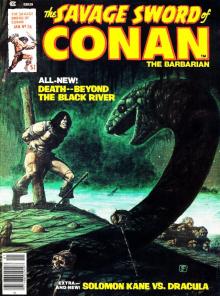 Beyond the Black River
Beyond the Black River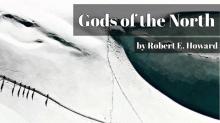 Gods of the North
Gods of the North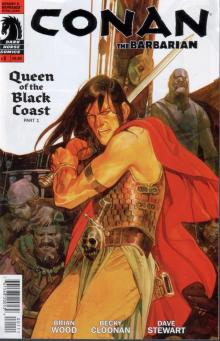 Queen of the Black Coast
Queen of the Black Coast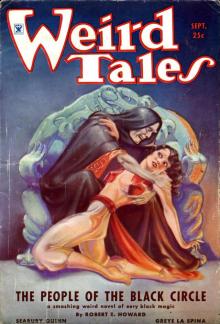 The People of the Black Circle
The People of the Black Circle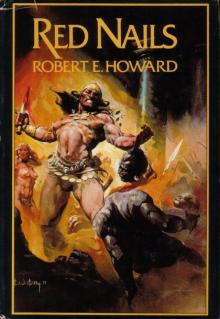 Red Nails
Red Nails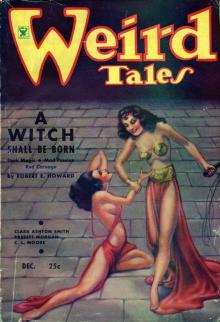 A Witch Shall Be Born
A Witch Shall Be Born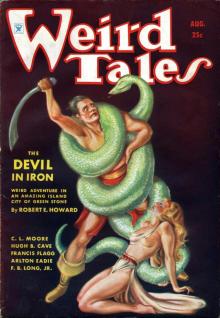 The Devil in Iron
The Devil in Iron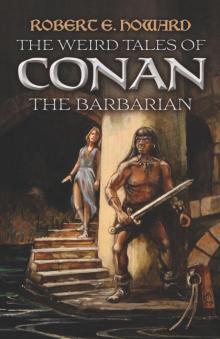 The Weird Tales of Conan the Barbarian
The Weird Tales of Conan the Barbarian The Bloody Crown of Conan
The Bloody Crown of Conan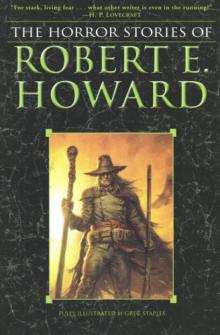 The Horror Stories of Robert E. Howard
The Horror Stories of Robert E. Howard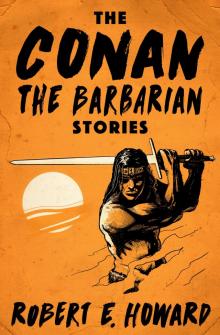 Conan the Conqueror
Conan the Conqueror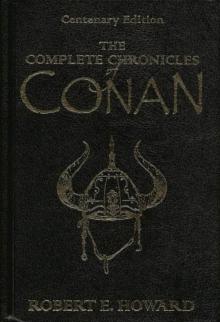 Conan the Barbarian
Conan the Barbarian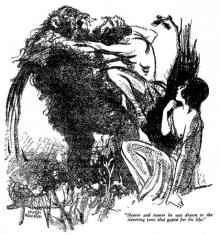 Shadows in the Moonlight
Shadows in the Moonlight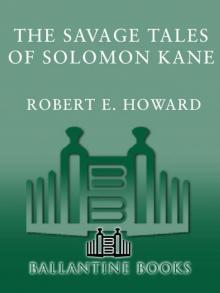 The Savage Tales of Solomon Kane
The Savage Tales of Solomon Kane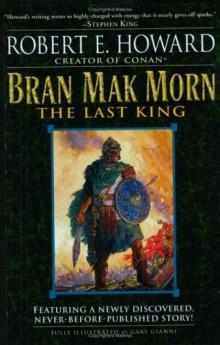 Bran Mak Morn: The Last King
Bran Mak Morn: The Last King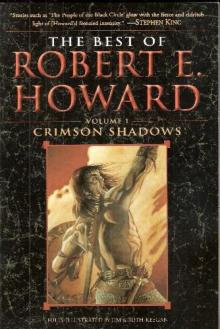 The Best of Robert E. Howard Volume One: Crimson Shadows
The Best of Robert E. Howard Volume One: Crimson Shadows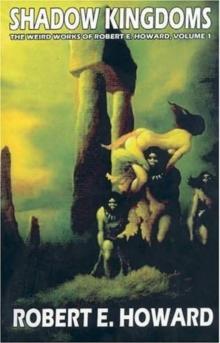 The Best of Robert E. Howard: Crimson Shadows (Volume 1)
The Best of Robert E. Howard: Crimson Shadows (Volume 1)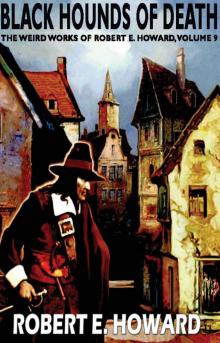 Black Hounds of Death
Black Hounds of Death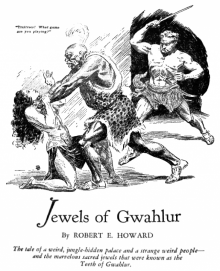 Jewels of Gwahlur
Jewels of Gwahlur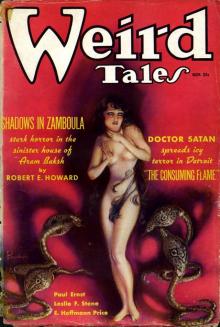 Shadows in Zamboula
Shadows in Zamboula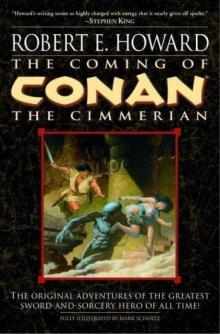 The Coming of Conan the Cimmerian
The Coming of Conan the Cimmerian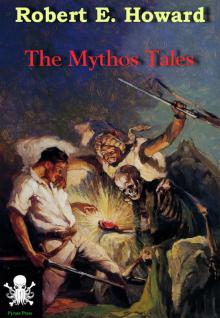 The Mythos Tales
The Mythos Tales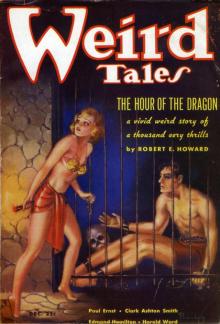 The Hour of the Dragon
The Hour of the Dragon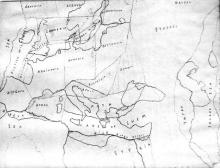 The Hyborian Age
The Hyborian Age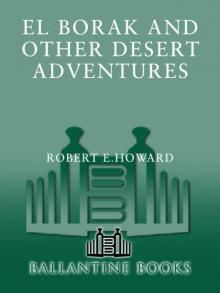 El Borak and Other Desert Adventures
El Borak and Other Desert Adventures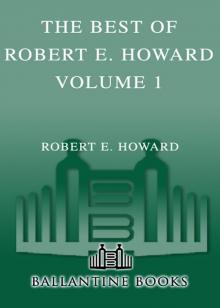 The Best of Robert E. Howard Volume 1 The Best of Robert E. Howard Volume 1
The Best of Robert E. Howard Volume 1 The Best of Robert E. Howard Volume 1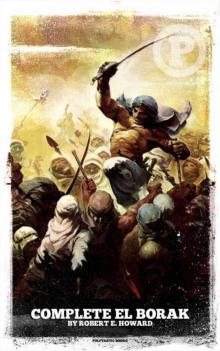 El Borak: The Complete Tales
El Borak: The Complete Tales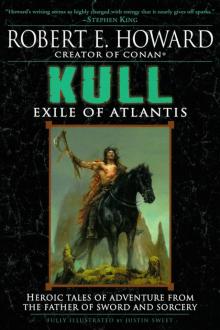 Kull: Exile of Atlantis
Kull: Exile of Atlantis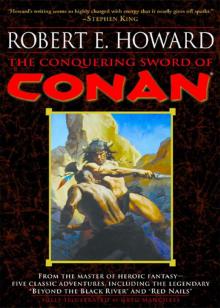 The Conquering Sword of Conan
The Conquering Sword of Conan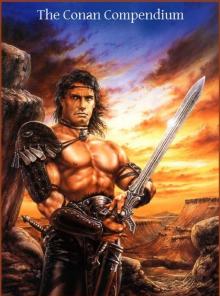 The Conan Compendium
The Conan Compendium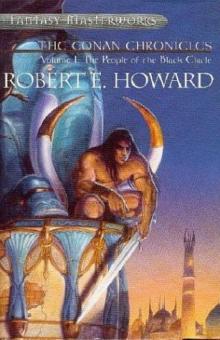 The Conan Chronicles: Volume 1: The People of the Black Circle
The Conan Chronicles: Volume 1: The People of the Black Circle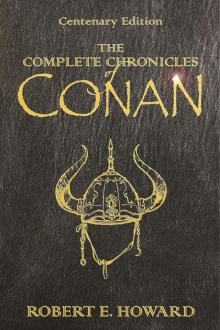 The Complete Chronicles of Conan: Centenary Edition
The Complete Chronicles of Conan: Centenary Edition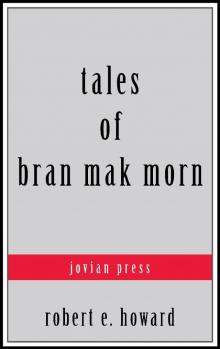 Tales of Bran Mak Morn (Serapis Classics)
Tales of Bran Mak Morn (Serapis Classics)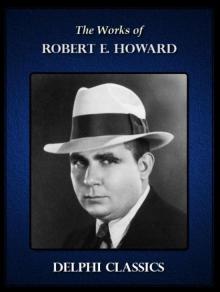 Delphi Works of Robert E. Howard (Illustrated) (Series Four)
Delphi Works of Robert E. Howard (Illustrated) (Series Four)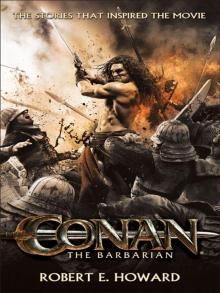 Conan the Barbarian: The Stories That Inspired the Movie
Conan the Barbarian: The Stories That Inspired the Movie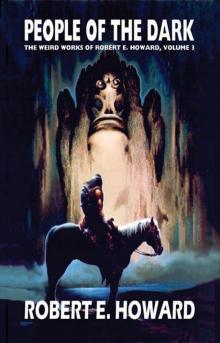 People of the Dark Robert Ervin Howard
People of the Dark Robert Ervin Howard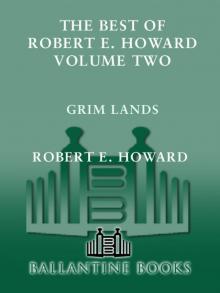 Grim Lands
Grim Lands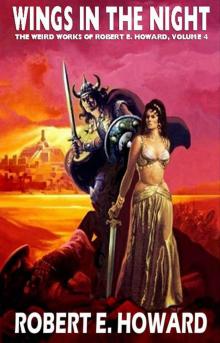 Wings in the Night
Wings in the Night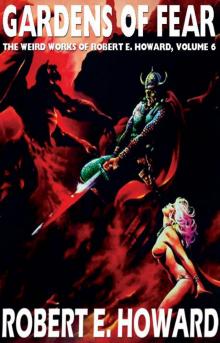 Gardens of Fear
Gardens of Fear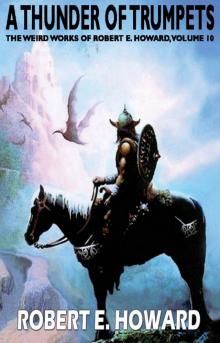 A Thunder of Trumpets
A Thunder of Trumpets Detective of the Occult
Detective of the Occult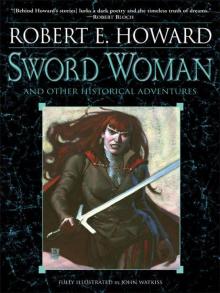 Sword Woman and Other Historical Adventures
Sword Woman and Other Historical Adventures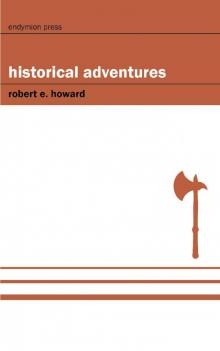 Historical Adventures
Historical Adventures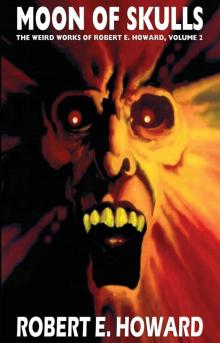 Moon of Skulls
Moon of Skulls The Robert E. Howard Omnibus: 97 Collected Stories
The Robert E. Howard Omnibus: 97 Collected Stories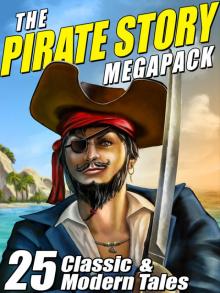 The Pirate Story Megapack: 25 Classic and Modern Tales
The Pirate Story Megapack: 25 Classic and Modern Tales The Best of Robert E. Howard, Volume 2
The Best of Robert E. Howard, Volume 2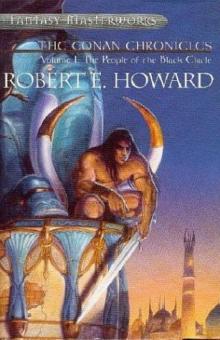 The Conan Chronicles, Vol. 1: The People of the Black Circle
The Conan Chronicles, Vol. 1: The People of the Black Circle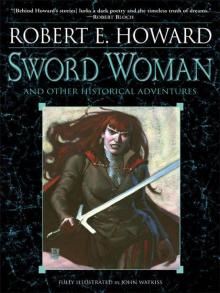 Sword Woman and Other Historical Adventures M
Sword Woman and Other Historical Adventures M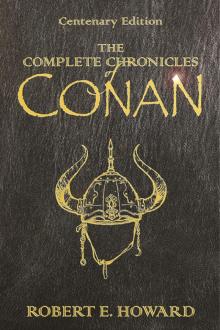 The Complete Chronicles of Conan
The Complete Chronicles of Conan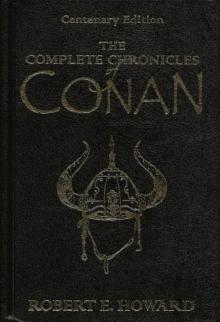 Conan the Barbarian: The Chronicles of Conan (collected short stories)
Conan the Barbarian: The Chronicles of Conan (collected short stories)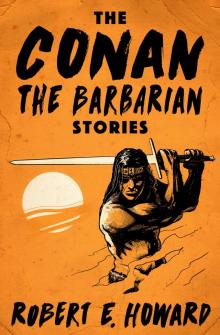 The Conan the Barbarian Stories
The Conan the Barbarian Stories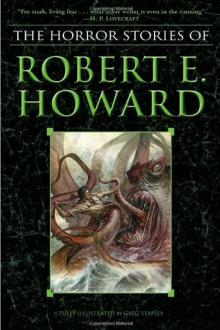 The Best Horror Stories of
The Best Horror Stories of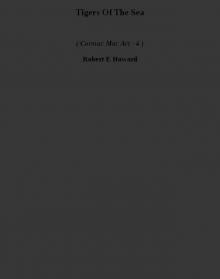 Tigers Of The Sea cma-4
Tigers Of The Sea cma-4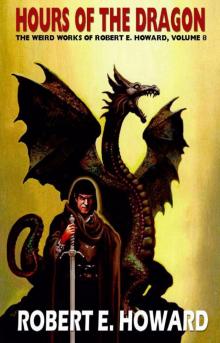 The Hours of the Dragon
The Hours of the Dragon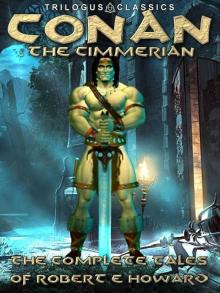 Conan the Cimmerian: The Complete Tales (Trilogus Classics)
Conan the Cimmerian: The Complete Tales (Trilogus Classics)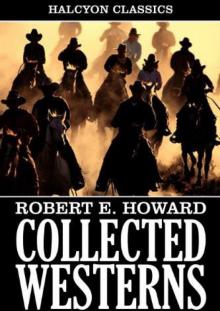 Collected Western Stories of Robert E. Howard (Unexpurgated Edition) (Halcyon Classics)
Collected Western Stories of Robert E. Howard (Unexpurgated Edition) (Halcyon Classics)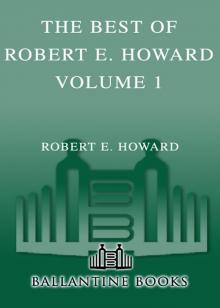 The Best of Robert E. Howard, Volume 1
The Best of Robert E. Howard, Volume 1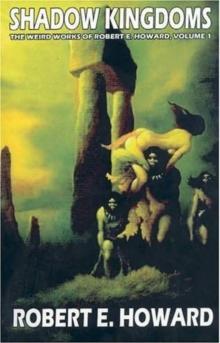 Shadow Kingdoms
Shadow Kingdoms